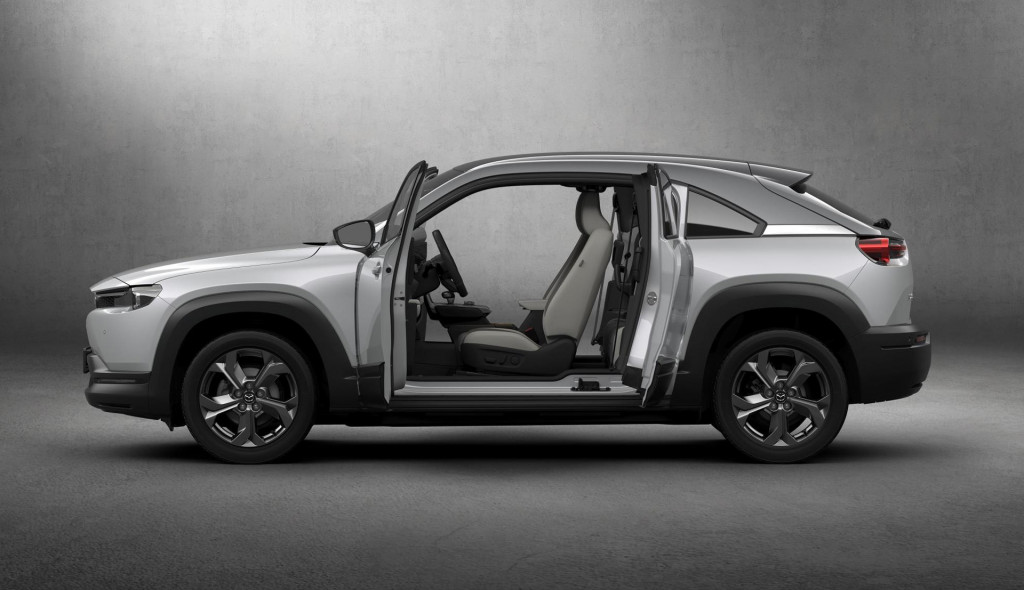Mazda has begun discussions with Panasonic for supply of cylindrical battery cells for future EVs, the two companies announced Wednesday.
The goal of the discussions is to hammer out an agreement for Panasonic to supply cells from factories in Japan and North America for use by Mazda in EVs "scheduled to be launched in the latter half of the 2020 decade," according to a press release. The companies are just talking however, with no firm agreement in place.
No further details were given, but cells supplied from North America would likely come from a new factory in De Soto, Kansas, which has been claimed to be the largest battery plant in the world.

Panasonic cylindrical EV battery cells
The relationship between Panasonic and Mazda dates back to 2012, when Panasonic supplied batteries for the Mazda Demio EV, which was leased to customers in Japan on a limited basis. A collaboration at this stage could be more far-reaching.
Aside from the California-only, limited-volume MX-30, Mazda has no EVs in its U.S. lineup. That's set to change with a clean-sheet EV platform coming in the second half of this decade, forming the basis for multiple models to be launched between 2025 and 2030. Mazda said in 2021 that it expects its entire lineup to have some degree of electrification by 2030, with EVs making up 25% of that total.
Hybrids, including the recently launched 2024 Mazda CX-90 plug-in hybrid and a planned CX-50 hybrid, will bridge the gap until EVs based on the planned dedicated platform arrive.

2022 Mazda MX-30
Mazda has indicated that longer-range EVs aren't the future, but the use of cylindrical cells could yield efficiency gains. It's the chosen cell format of Lucid and Tesla—the two range-leading EV brands. Tesla is Panasonic's main EV battery customer; Lucid announced in 2022 that it would begin using Panasonic cells as well.
Established automakers have been slower to adopt cylindrical cells, though. BMW confirmed a shift to this format for future EVs last year, and General Motors is reportedly mulling cylindrical cells for some applications.
Mazda tested electric versus hybrid powertrains years ago, and concluded that drivers preferred the characteristics of EVs. Instead of taking that as a cue to speed up development of EVs, Mazda has mostly focused on efforts to improve the efficiency of combustion engines with interesting, but ultimately unsuccessful, projects like the SkyActiv-X homogeneous charge compression ignition (HCCI) engine and SkyActiv-D diesel.












